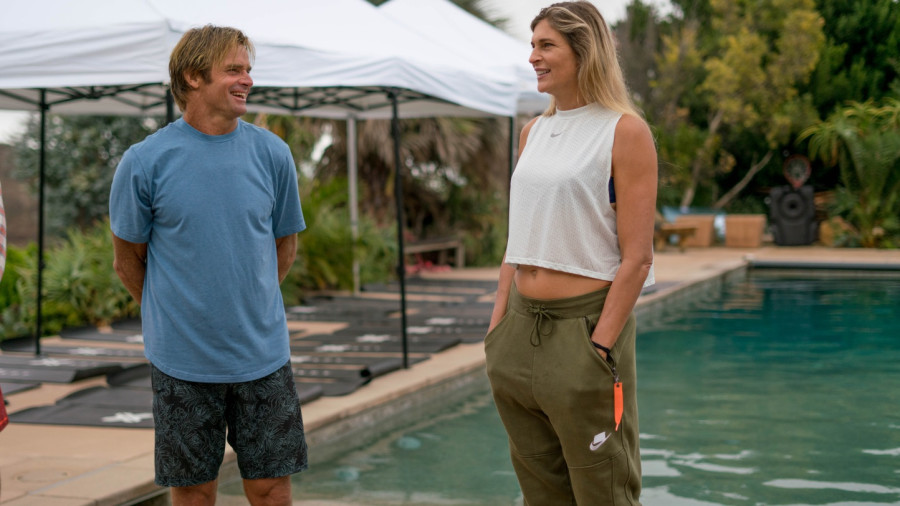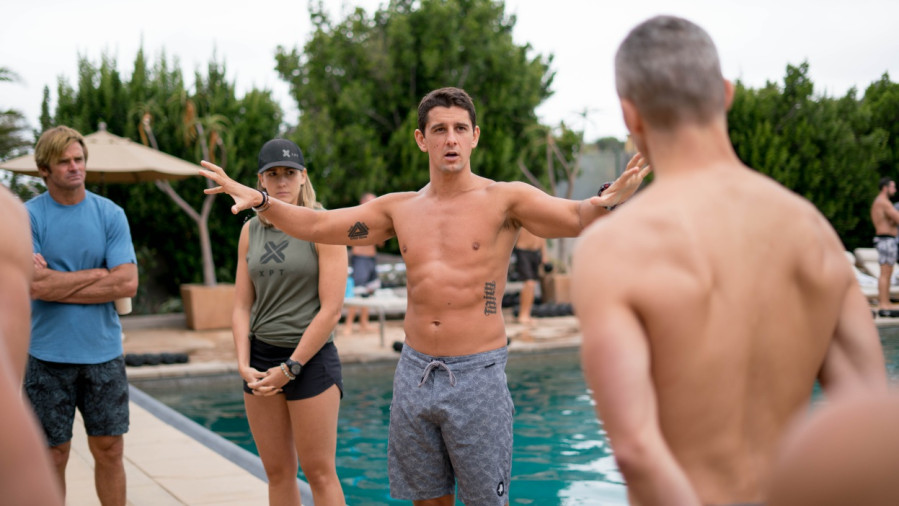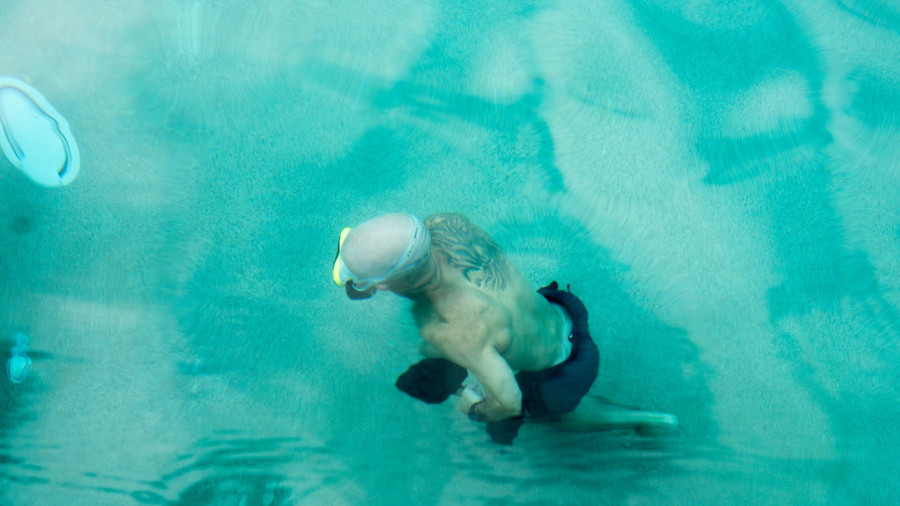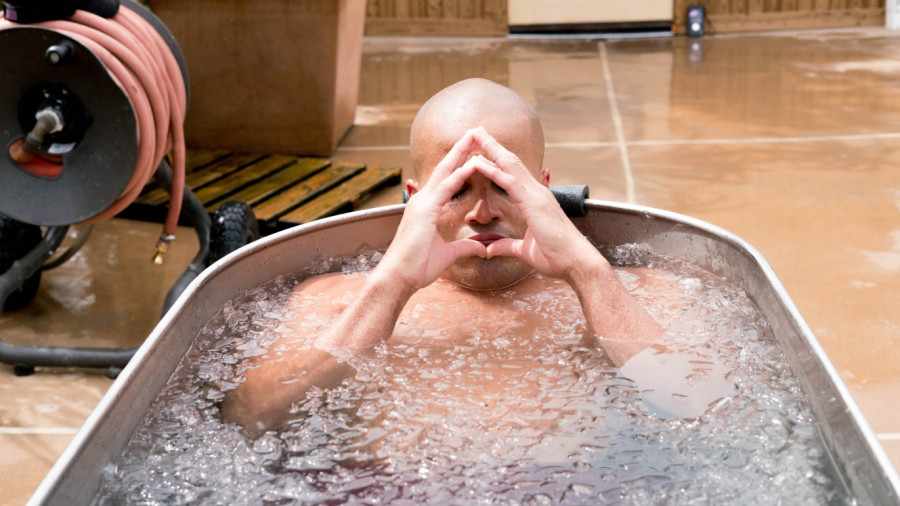I’m lying flat on my back on Laird Hamilton’s pool deck, perched high on a cliff overlooking the Pacific Ocean near Malibu. I’m surrounded by about 20 strangers, who are doing the same. Thick clouds are rolling in off the water, obscuring the nearby hills, and Hamilton is pacing between us, calling out commands to regulate our breathing. Breathe in through the nose, out through the mouth; faster, slower, hold. It’s definitely not my typical Saturday morning, but that’s not even the strangest thing about it: I’m euphoric. My arms and hands are pulsing and tingling, and I feel like I’m high. And all I did was breathe a little differently. I’m at Laird’s house to get an intro to XPT fitness, the comprehensive health regimen he developed with his wife, pro volleyball player Gabby Reece.
Over more than a decade, XPT has morphed from a way for Hamilton and Reece to stay fit into a full-fledged program for elite athletes, military special forces, and anyone looking to push themselves to a new level of physical and mental fitness. Breathing beside me on the pool deck are former Navy SEALs, an MMA fighter, a former NFL player, Olympic water polo players, and several very fit men and women from around the country.
XPT is made up of three parts: breathing, moving, and recovery. In between sessions, I caught up with PJ Nestler, XPT’s director of performance, to get a little more insight into how the program is structured.

Breathe
Breath work forms the foundation, Nestler tells me, and there are two reasons for that (feeling high is not one of them). First, if you’re not breathing properly and using your full lung capacity, you’ll tire more easily when working out. Second, by controlling your breath, you can effectively control your mental state by toning down anxiety and stress, achieving better focus. In some ways, the mental game is even more important than the physical.
“If your psychology is off, your technical skills, your knowledge of the game, strategies, physical skill—all that’s out the window,” he says.
The breath work draws from a variety of sources, Nestler explains. The breathing session includes slow, meditative breaths; fast-paced huffing and puffing; and even Wim Hof Method techniques.
“The breathing we’ve developed through learning from other people,” Nestler says. “A lot of this stuff’s been around for thousands of years.”

Move
The movement aspect of XPT happens in the pool. By weight training in the water, you get a solid workout with less impact on your joints than you would in the gym. The water supports you as you move, and offers another advantage, too: It forces you to work on your mental game.
Nestler leads me through a pool workout that involves several types of weighted squats and crawling with dumbbells across the pool and back. Sounds pretty straightforward, but if I mess up a squat and don’t break the surface, I don’t just have bad form; I miss out on a chance to breathe. When that happens, suddenly all my bad memories of seventh grade swim team come rushing back. The key is to inhale deeply when I come above water, then exhale on the way down. That way, I harness more power to complete the exercise and I keep my anxiety in check.

The cross-pool carries were also a big challenge. The goal is to crawl—using 30-pound dumbbells to stay planted on the bottom of the pool—across and back on just one breath. About halfway through each rep, that burning, desperate-for-air feeling creeps into my lungs. But by focusing on the task, I manage to power through. And by slowing my breathing once I finish, I’m able to recover and go for the next rep fairly quickly.
Recover
In XPT, recovery means alternating between a 220-degree sauna and an ice bath, or “hypothermic training,” as the website calls it. I usually enjoy a trip to the sauna, but this was definitely hotter than I’m used to. After struggling through 15 minutes of intense heat, my group and I took turns hopping into the ice bath for three minutes. The heat was tough; the ice bath was excruciating. Again, it all came down to breathing: By focusing on inhaling and exhaling, I powered through the pain.

While studies have come to some conflicting conclusions regarding the efficacy of ice baths over the years, contrast therapy is still widely used by athletes in an effort to hasten muscle recovery. The idea here is to help your body recover through exposure to extreme heat and cold. Ice baths are thought to reduce swelling and tissue breakdown, whereas saunas are believed to spur the release of a growth hormone and testosterone while reducing stress hormones in the body. Like the breath work and the pool workouts, there’s a big mental aspect to these as well. By sweating in the sauna and plunging into the ice bath, you slowly condition yourself to deal with extreme situations calmly.
Until recently, XPT was mainly available through multi-day retreats in far-flung locales or local workshops run by certified instructors (there are currently around 250 XPT trainers). As the crowd on Saturday illustrated, it has largely appealed to elite athletes and people who are already in prime physical shape. But with the recent launch of the XPT app, which includes guided workouts and breathing sessions, the company is working to make the program more accessible to everyday people.
“I personally think that this stuff is way more impactful for the average consumer,” Nestler says.
A Navy SEAL might try XPT to push his mental and physical limits just a little further, Nestler explains. But the average person has a lot more room to grow, and XPT can potentially do even more for them.
I definitely appreciated the unique challenges I faced during my visit, and walked away with a new understanding of how breathing can be a powerful tool for increasing performance. I also really enjoyed the pool workouts, which are a kind of exercise I generally shy away from. But the biggest surprise came the next day, when I went out for an evening run. As I ran, I focused on inhaling deeply at a slower cadence than usual. I ended up tying my fastest time for that route and feeling way less fatigued than normal. So, yeah, I’m kinda hooked.
Comments are closed.